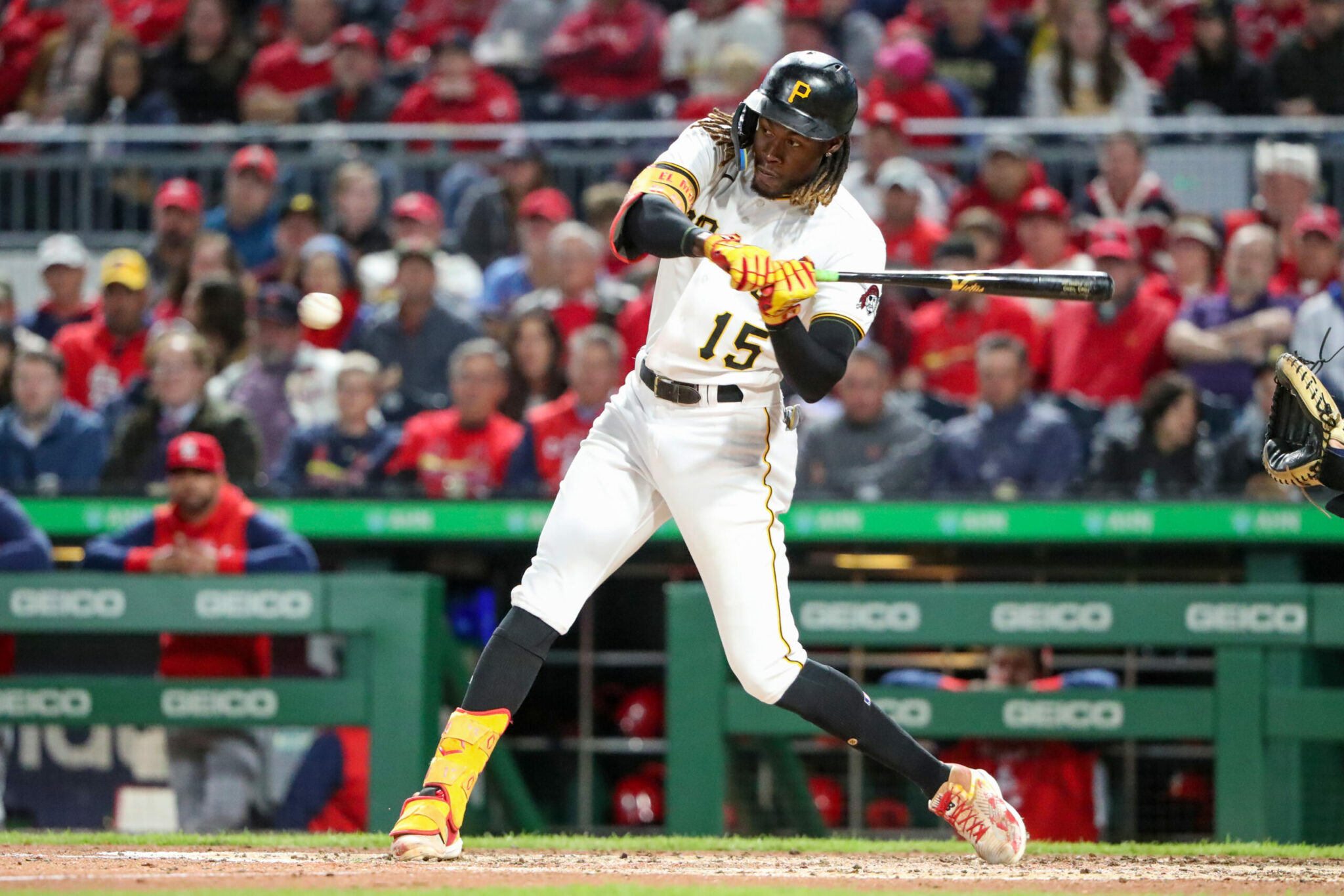The Pittsburgh Pirates scored the 27th fewest runs last season. Part of the reason for that was having the second highest strikeout rate in the majors.
It’s an interesting thing when digging into it, as their plate discipline numbers on Fangraphs speak to one simple suggestion.
Be more aggressive in the strike zone.
Pittsburgh hitters swung at only 31.7% of the pitches outside of the strike zone last year, the 10th lowest rate in all the majors. They also had the fourth best contact rate (86.7%) within the zone.
The issue? They took strike calls at a higher rate than any other team in the majors (18.2% called strike rate), which also resulted in the worst zone-swing rate in baseball (65.3%).
Maybe no player can benefit more from a little more aggression than Oneil Cruz. The rookie shortstop swung at just over half of the pitches in the zone (54.3%), resulting in a 21.7% called strike rate.
Oneil Cruz over everything!
Jack Suwinski (63.2%) and Ke’Bryan Hayes (63.5%) were two other regulars that also finished with a below team average zone-swing rate last season, but also didn’t chase much out of the zone as well.
They will have some help, as some of the offensive help they brought in during the offseason all have a track record of excelling in these specific categories.
Both Andrew McCutchen and Ji-Man Choi have zone-swing rates of over 70%, with Carlos Santana just south of that mark (66.6%). They also don’t swing at pitches outside of the zone, with an O-Swing% each in the low-to-mid-20s, whereas the Pirates as a team were over 30%.
It seemed like a very specific philosophy that the Pirates went with to try and work deeper into counts, which in theory is a great idea that worked to moderate success. As a team, they finished middle of the pack in walk rate, which is fine, unless you’re not capitalizing on pitches in the zone.
While it’s never a bad idea to try and make the opposing starting pitcher work harder, we saw the power that this lineup can have at times, so a more aggressive approach inside the zone could unlock so many more potential runs.
The Pirates made it a point to add more offense to support the pieces they already have, all of which help in being more aggressive in the zone. We will just have to wait to see if that results in more runs during the season
Highlight of the Day
Pirates Prospects Daily
By Tim Williams
**In the latest Pirates Winter Report, John Dreker digs into what outfield prospect Solomon Maguire learned from older competition this winter.
**The Pirates added to their scouting department in Puerto Rico.
**Missed yesterday? Anthony looked at three Pirates players to watch in the World Baseball Classic.
Song of the Day



